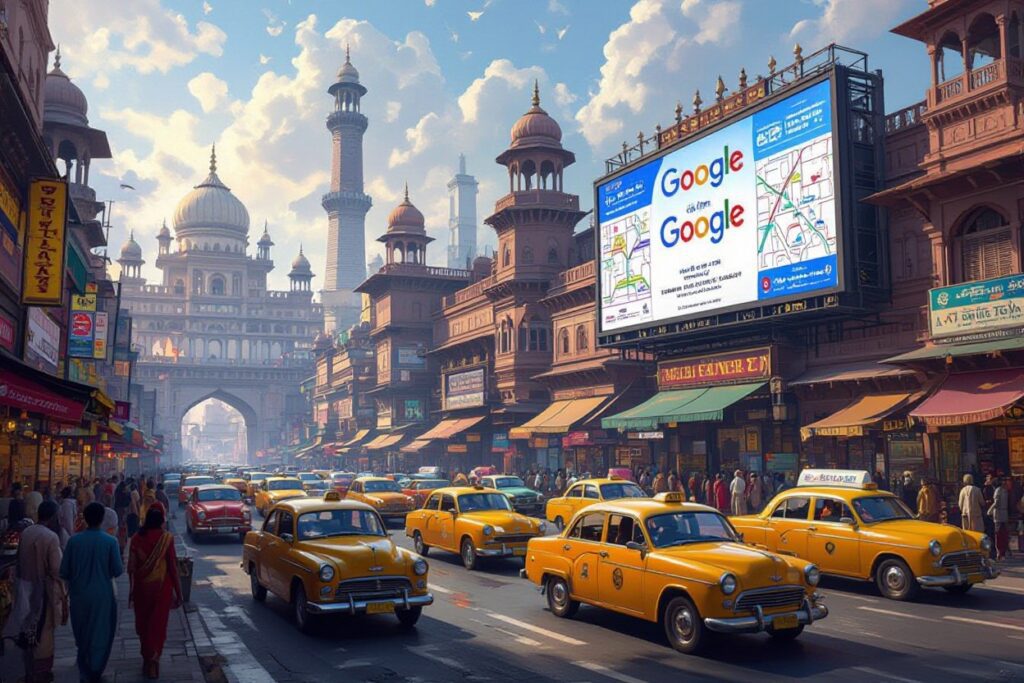Google offers powerful tools to help promote your taxi or cab service in India, and I’m here to guide you through setting up effective Google Ads campaigns. By understanding your target audience, selecting the right keywords, and optimizing your ad content, you can attract more customers and increase your bookings. In this post, I’ll share practical tips to help you navigate Google Ads, ensuring your campaigns deliver maximum return on investment for your taxi business.
Crafting Targeted Ads That Stand Out
Creating ads that capture attention means zeroing in on your target audience’s pain points and preferences. I focus on messaging that highlights your taxi service’s unique selling propositions—whether it’s affordable rides, 24/7 availability, or airport pickups. Precision in targeting paired with clear, benefit-driven language ensures your ads resonate. Consider integrating localized terms and popular city landmarks to make your ads feel native and relevant, increasing the likelihood of clicks from the people actually searching for cab services in your operational areas.
Identifying Your Ideal Customer Base
Defining the demographics and behaviors of your taxi service customers sharply increases ad efficiency. For example, working professionals seeking quick airport transfers or students who prioritize affordability can be distinct segments to target. Dive into insights from Google Ads tools and local market research to pinpoint who is booking taxis most often. I recommend layering factors like age, commuting patterns, and device usage to craft personalized ad sets that match real-world demand and user habits.
Utilizing Compelling Ad Copy and Visuals
Your ad copy should communicate value within seconds—think concise headlines like “Flat 20% off on Airport Rides” or “Ride Safe, Ride Secure—Book Now.” Pair this with visuals showing clean, professional cabs and happy customers to build trust instantly. Using call-to-action phrases like “Book Your Ride” or “Get Instant Fare Estimate” motivates immediate interaction. Well-designed ads that leverage local imagery and simple icons improve both click-through rates and conversions by making your service memorable and easy to understand.
Diving deeper, I find that integrating recognition elements such as testimonials or ratings within ad extensions profoundly impacts user trust. For instance, displaying a 4.8-star rating from Google reviews or highlighting your fleet’s sanitization standards in images can address safety concerns, especially post-pandemic. Combining vibrant photos of your taxis on busy city streets with straightforward, benefit-led text helps position your service as both reliable and accessible, encouraging users to choose your brand over competitors.
Navigating Google Ads Campaign Structure
Structuring your Google Ads campaigns effectively can greatly improve your taxi service’s visibility and click-through rates in India. I recommend organizing your campaigns by geographic regions or service types like airport transfers or city rides. This method allows you to tailor your messaging and bidding strategies. The hierarchy flows from campaigns to ad groups, then to keywords and ads, making it easier to analyze performance and optimize accordingly. Keeping your campaigns tightly themed reduces irrelevant clicks and raises the quality score, which lowers your cost per click.
Setting Up Campaign Goals and Budgets
You should define clear, measurable goals for each campaign, such as generating ride bookings or increasing app downloads. Selecting the right campaign type, like Search or Local, aligns with these objectives. Allocate budgets based on daily ride demand; for instance, metro cities like Mumbai might need higher daily spends due to competition. Using automated bidding strategies, like Maximize Conversions, can stretch budgets efficiently while targeting riders during peak hours.
Understanding Ad Groups and Keywords for Taxi Services
Ad groups should focus on tightly related keywords, such as “taxi service Mumbai” or “airport cab booking Delhi,” allowing you to craft highly relevant ads. Grouping by ride types—short city trips versus long-distance travel—lets you adjust bids and tailor offers precisely. Negative keywords like “free taxi” help keep costs down by filtering out non-converting traffic. Using location-specific keywords improves ad relevance and click-through rates, as users generally search with their city or neighborhood in mind.
Diving deeper, I’ve found that segmenting ad groups by user intent can skyrocket your campaign efficiency. For example, an ad group targeting “airport cab service Chennai” can include keywords such as “cheap airport taxi Chennai” and “airport cab booking Chennai.” Each ad within the group can focus on specific benefits like fixed rates, quick pickups, or 24×7 availability. This granular keyword approach improves Quality Scores and lowers CPC by aligning the ad copy closely with searcher queries, ultimately driving higher conversion rates for your taxi service.
Mastering Bidding Strategies for Maximum ROI
I constantly adjust bidding strategies to get the best return on ad spend in India’s taxi market. Choosing the right bid type can make a huge difference—whether it’s targeting clicks for immediate bookings or impressions for brand awareness. My approach involves closely monitoring local peak hours and competitor activity, then shifting bids to capitalize on high demand, like during festivals or rush hours. Maximizing ROI means not just spending efficiently but ensuring those clicks convert into rides, which demands a smart balance between aggressive and conservative bidding.
Exploring Different Bidding Options
Google Ads offers versatile bidding strategies like CPC (Cost Per Click), CPA (Cost Per Acquisition), and Target ROAS (Return on Ad Spend). For taxi services, I often start with CPC to gauge traffic, then transition to CPA once enough conversion data accumulates. Target ROAS works well as your campaign matures, helping you align bids with your revenue goals. Smart Bidding algorithms also allow automatic bid adjustments, but it’s wise to test and tailor them based on your service area and customer behavior trends.
Analyzing Performance Metrics for Continuous Improvement
Tracking metrics such as Cost Per Conversion, Click-Through Rate (CTR), and Conversion Rate enables me to pinpoint what’s working and what isn’t. Noticing that lower CPCs during off-peak hours don’t convert as well prompts bid adjustments for higher-value time slots. I utilize Google’s Attribution Reports to understand customer journeys better and reallocate budget toward ads delivering the highest lifetime value. This data-driven feedback loop keeps campaigns lean, focused, and continuously improving.
Delving deeper into performance metrics, I also examine impression share loss due to budget or rank to identify missed opportunities. For example, a low impression share during morning commutes indicates underfunded bids when demand spikes. Analyzing geographic performance highlights regions generating more bookings, which helps optimize location targeting and ad scheduling. Over time, integrating Google Analytics with Google Ads allows advanced segment analysis, revealing user behavior patterns like repeat bookings or drop-offs, empowering you to tweak bids and creatives strategically for sustained growth.


Leveraging Local SEO for Geographically Targeted Ads
Focusing your Google Ads on local SEO dramatically improves the relevance and reach of your taxi service. Geotargeting allows the ads to connect with potential riders precisely at the times and places they need a cab. By optimizing for local search terms and integrating location data, you can ensure that your ad impressions turn into actual bookings. I’ve seen taxi operators in Delhi boost leads by over 40% using geotargeted campaigns that sync with their physical service areas, demonstrating the power of honing in on location-specific customer intent.
Incorporating Location-Based Keywords
Embedding city names, neighborhoods, and popular landmarks in your ad copy and keywords sharpens your campaign’s focus. For example, phrases like “taxi service in Mumbai Central” or “airport cab in Bengaluru” guide Google Ads to display your offerings when similar searches occur. I recommend mining Google Trends or competitor analyses to uncover high-volume local terms. This tailored keyword approach not only heightens ad relevance but also lowers your cost-per-click by reducing competition against broader, less targeted keywords.
Enhancing Visibility Through Google My Business
Google My Business (GMB) profiles amplify your local presence and directly impact ad performance by providing vital business details alongside your ads. Confirming your taxi service’s address, operating hours, and contact information helps Google deliver your ads to users nearby actively seeking rides. It also allows potential customers to browse reviews and photos, building trust even before they click through. Having a complete and regularly updated GMB listing turns your Google Ads from simple promotions into dynamic customer engagement tools.
Expanding on GMB, managing your listing actively can further elevate your online visibility. I advise responding promptly to reviews, posting updates about new services or safety measures, and uploading photos of your fleet or drivers to humanize your brand. Additionally, GMB’s insights feature provides valuable data on how customers find your listing and interact with it, helping you refine your ad targeting. Consistent attention here complements your paid efforts, driving higher quality leads in competitive taxi markets.
Ad Compliance and Quality Score Optimization
Ensuring your taxi service ads meet Google’s advertising policies boosts both visibility and user trust, while optimizing Quality Scores can significantly lower your cost-per-click (CPC). Compliance avoids suspensions, and higher Quality Scores improve ad rank, meaning your ads appear in better positions with more clicks. Keeping ad content relevant, accurate, and timely plays a key role in this process.
Understanding Google Ads Policies for Taxi Services
Google has specific guidelines for transportation services emphasizing safety, transparency, and legality—for instance, ads must not promote unauthorized or unlicensed taxi operations. Your ad’s destination page should clearly detail fare structures and any licensing information, with no misleading claims about vehicle types or driver credentials. I’ve seen campaigns get disapproved simply because they failed to outline transparent pricing or omitted local licensing notices, so aligning with these rules upfront avoids costly delays.
Strategies to Improve Quality Scores and Ad Ranks
Improving Quality Scores involves refining your ad relevance, expected clickthrough rate, and landing page experience. Structuring campaigns around tightly themed ad groups—such as differentiating between airport pickups and local rides—enhances relevance and engagement. Including precise keywords like “24/7 airport taxi Delhi” directly in the ad copy helps Google match your ads with high-intent search queries, boosting your ad rank and reducing costs.
Diving deeper, testing different ad copy variations to highlight unique selling propositions—like air-conditioned cars or driver verification—can uplift expected CTR. Optimizing landing pages to load quickly, provide clear booking options, and display user reviews significantly improves the landing page experience metric. Leveraging ad extensions, such as call buttons and location info, increases ad real estate and clickability, contributing to higher overall Quality Scores and visibility in competitive metros.
Conclusion
From above, I understand that running Google Ads for a taxi or cab service in India involves targeting the right audience with location-specific keywords, creating compelling ad copy, and optimizing your campaigns for local searches. You should analyze performance regularly and adjust bids to maximize your budget. By focusing on mobile-friendly ads and utilizing extensions like call buttons, you can improve engagement and drive more bookings efficiently. Following these strategies will help you grow your taxi service’s visibility and attract more customers through Google Ads.

